Election season is on. Indians will soon be making a choice on who should lead them. From when did the people of this country get the right to vote and choose their leaders?
The constituent assembly framed the constitution of India to be republic. Being a republic entails voting by every person – Universal Adult Franchise. All adults above the age of 21 were eligible to vote.
Jawaharlal Nehru moving the resolution for an independent sovereign republic in the Constituent Assembly
It is interesting to note that India gave equal voting rights to women in 1951 itself, whereas countries like Switzerland gave voting rights to women only in 1972.
When doubts were raised about whether the illiterate people were capable of voting, Dr. Rajendra Prasad, a member of constituent Assembly, who later became the first President of India gave a fitting reply in the constituent assembly.
His observation is pertinent even to this day, 65 years after his speech.
The relevant extract being,
“Some people have doubted the wisdom of adult franchise. Personally, although I look upon it as an experiment the result of which no one will be able to forecast today, I am not dismayed by it. I am a man of the village and although I have had to live in cities for a pretty long time, on account of my. work, my roots are still there. I, therefore, know the village people who will constitute the bulk of this vast electorate. In my opinion, our people possess intelligence and commonsense. They also have a culture which the sophisticated people of today may not appreciate, but which is solid. They are not literate and do not possess the mechanical skill of reading and writing. But, I have no doubt in my mind that they are able to take measure of their own interest and also of the interests of the country at large if things are explained to them. In fact, in some respects, I consider them to be even more intelligent than many a worker in a factory, who loses his individuality and becomes more or less a part of the machine Which he has to work. I have, therefore, no doubt in my mind that if things are explained to them, they will not only be able to pick up the technique of election, but will be able to cast their votes in an intelligent manner and I have, therefore, no misgivings about the future, on their account. I cannot say the same thing about the other people who may try to influence them by slogans and by placing before them beautiful pictures of impracticable programmes. Nevertheless, I think their sturdy commonsense will enable them to see things in the right perspective. We can, therefore, reasonably hope that we shall have legislatures composed of members who shall have their feet on the ground and who will take a realistic view of things.”
Did elections in India come in vogue only when the constitution was framed in 1950?
Elections in ancient India have been recorded in the different stories and texts of the land.
In different parts of India right from the Mahabharata period, there have been many Janapada, republics. The very word, ‘Janapada’ means “People’s Republic, where people come together to choose their leader.”
Some of the Mahajanapada of Ancient India
These are some of the Janapada, republics of yore that the historians have been able to list. Like this other parts of India also have had their republics. Similarly, to the west of Sindhu River in the west of Afghanistan comprising of present day Pakistan, there were a few such Janapada, republics.
Among these, one of the mentioned example is Uttaramerur.While the exact election mode in Janapada then is not available, the Uttaramerur inscription is a classic example, of eligible and disqualifiable candidates.
Uttaramerur Inscriptions
One of the early inscriptions specifically relating to elections in villages is available at the Vaikunda Temple in Uttaramerur village. Uttaramerur is a small prosperous town, 100 kilometres to the south of Chennai. These inscriptions are now popularly known as Uttaramerur inscriptions.
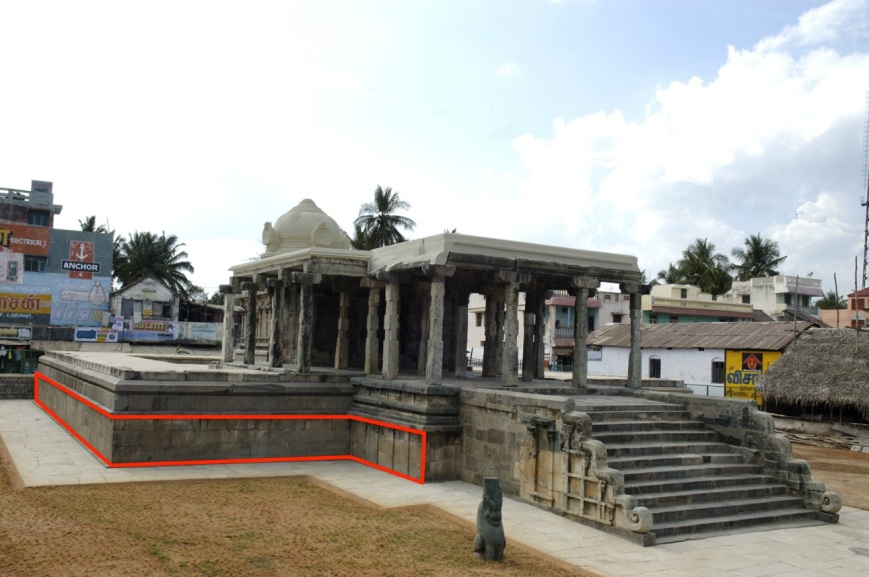
Uttaramerur Inscriptions at Vaikunda Perumal Temple
D K Hari at the inscription site
The Election System was then established by Royal Order under the Chola King, Parantaka Deva Parkesari Varman who ruled between 907 and 955 CE.
Chola King Parantaka Deva
As per these inscriptions we learn that, the village assembly, panchayat was formed in Uttaramerur Chaturvedi Mangalam, consisting of 30 wards. The period of the assembly was for one year. The area of operation of the village assembly, panchayat, included Village Sabha – Grama Sabha, Garden Sabha – Thotam Sabha and Tank Sabha – Eri Sabha.
The inscriptions throw light on the mode of election to Village Assemblies, Panchayat in those days.
English translation of the Uttaramerur inscription
Election Pot
There was an election ballot, a pot, in which the electors polled candidates of their choice with names written on palm leaves. Each person’s preference vote was inscribed on a palm leaf and was dropped into the ballot pot.
There were also qualifications and disqualifications for contesting an election.
Qualifications for contesting an election
-
Own more than ¼ th veli of tax paying land
-
Live in own house
-
Age 35-70 years
-
Must know Mantrabrahmana, be well read enough in general knowledge, to teach others
-
If he owns 1/8th of veli, he must have learnt atleast 1 Veda, Marai, and 1 of the 4 bhasya, i.e. explanation, its Porul, its Artham
-
Should be conversant with business
-
Should not have been on any other committee for the last 3 years
Disqualifications for contesting an election
-
One who has been on any of the committees but has not submitted his accounts.
-
Following relations of a contestant are also disqualified
-
The sons of the younger and elder sisters of his mother
-
The sons of his paternal aunt and maternal uncle
-
The uterine brother of his mother
-
The uterine brother of his father
-
His uterine brother
-
His father-in-law
-
The uterine brother of his wife
-
The husband of his uterine sister
-
The sons of his uterine sister
-
The son-in-law who has married his daughter
-
His father, his son
-
One against whom incest (agamyagamana) or first four of the five great sins are recorded.
-
One who is foolhardy
-
One who has stolen the property of another
-
One who has committed sins and has become pure by performing expiatory ceremonies
-
One who is guilty of incest and has become pure by performing expiatory ceremonies

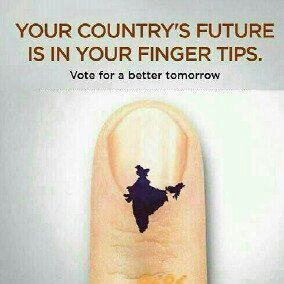

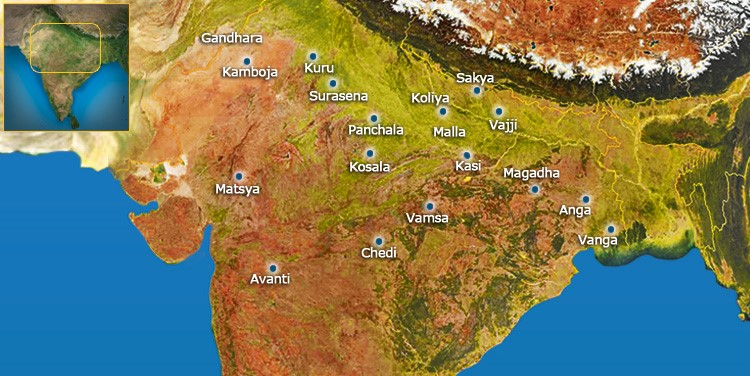
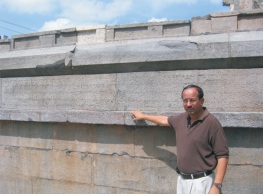
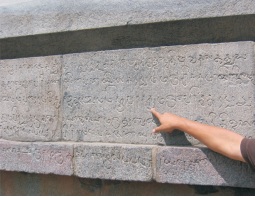
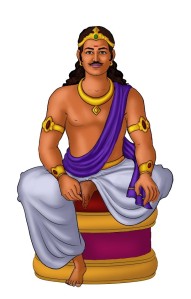
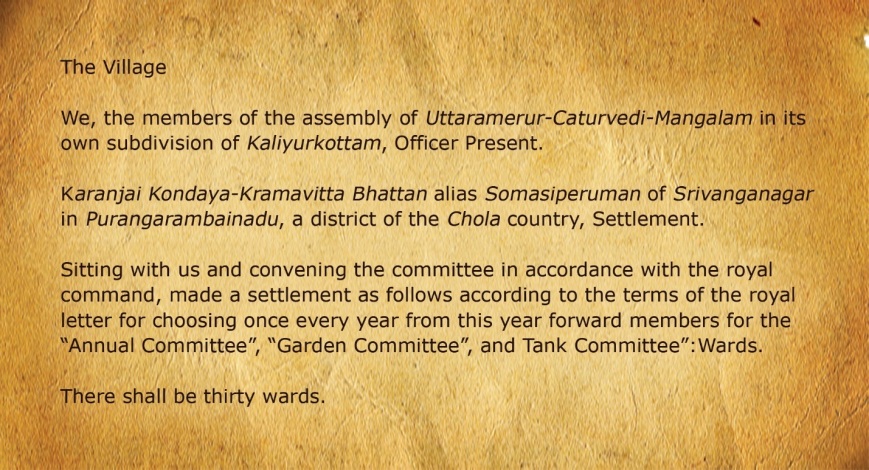
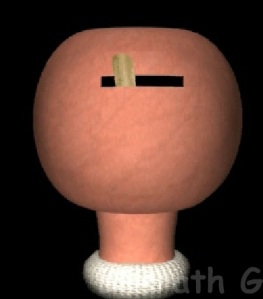
Glad you wrote this, elightening the readers, guarding them not to get lost in the din all around, but to focus on our
Inherited core values, if only to sustain ourselves without getting lost. A BIG THANK YOU.
Valuable insights for readers. Thanks for this one. Letting everyone become aware of the election systems in ancient India.
Wonderful information..rather interesting!
What was the process? Did they count the votes like a democracy? Or was it a lottery where the randomly chosen leaf was the winner?
Great idea sir. Tamil kingdoms lasted the longest in India (6th century BC to 14th century AD). Now, I know the secret for their long life.